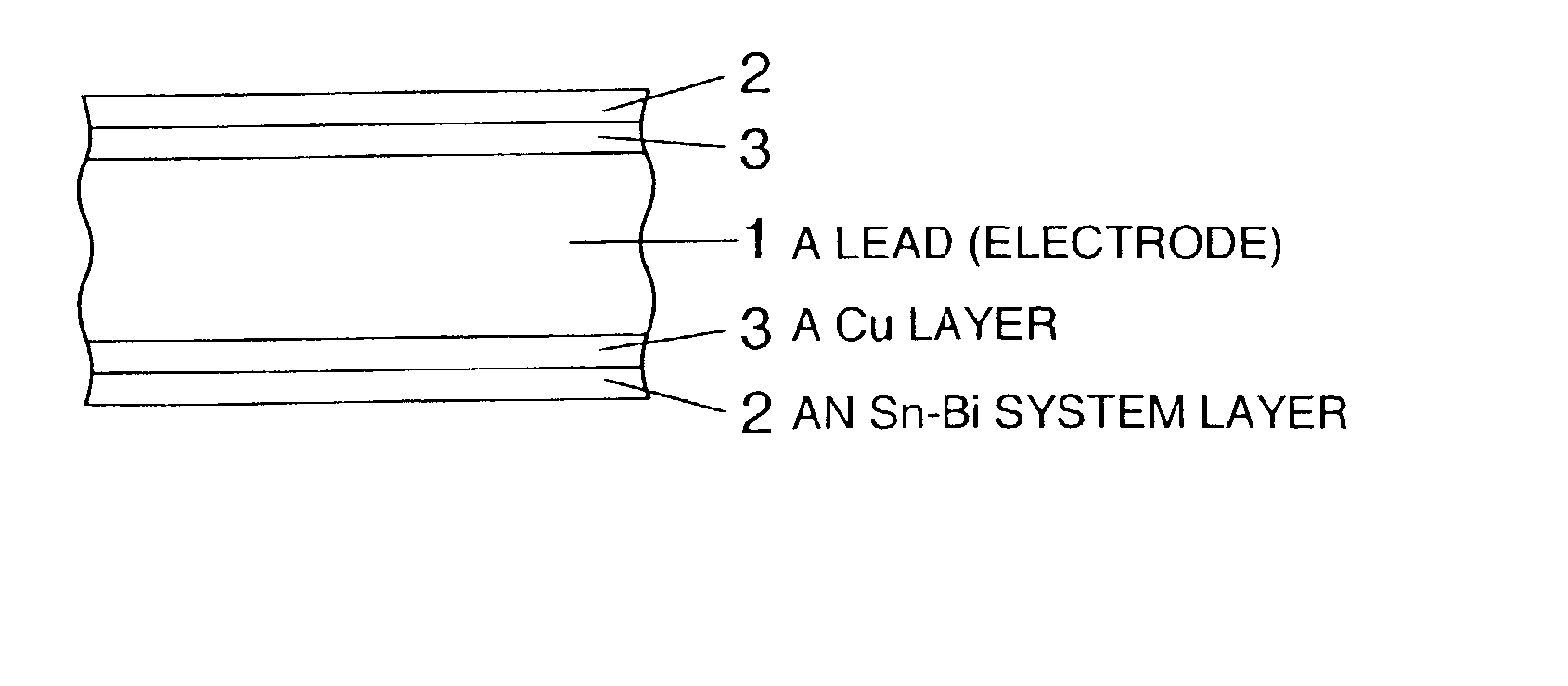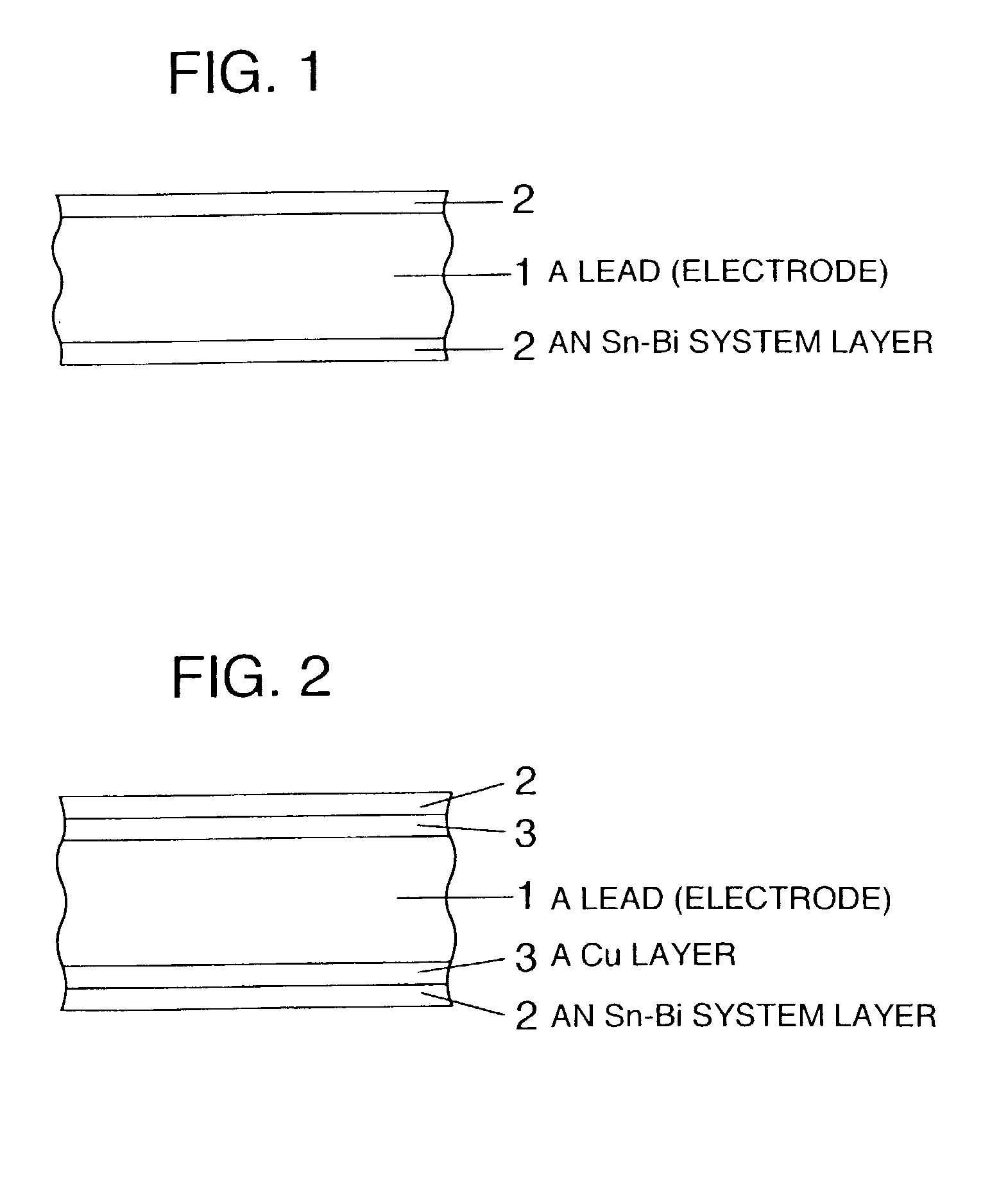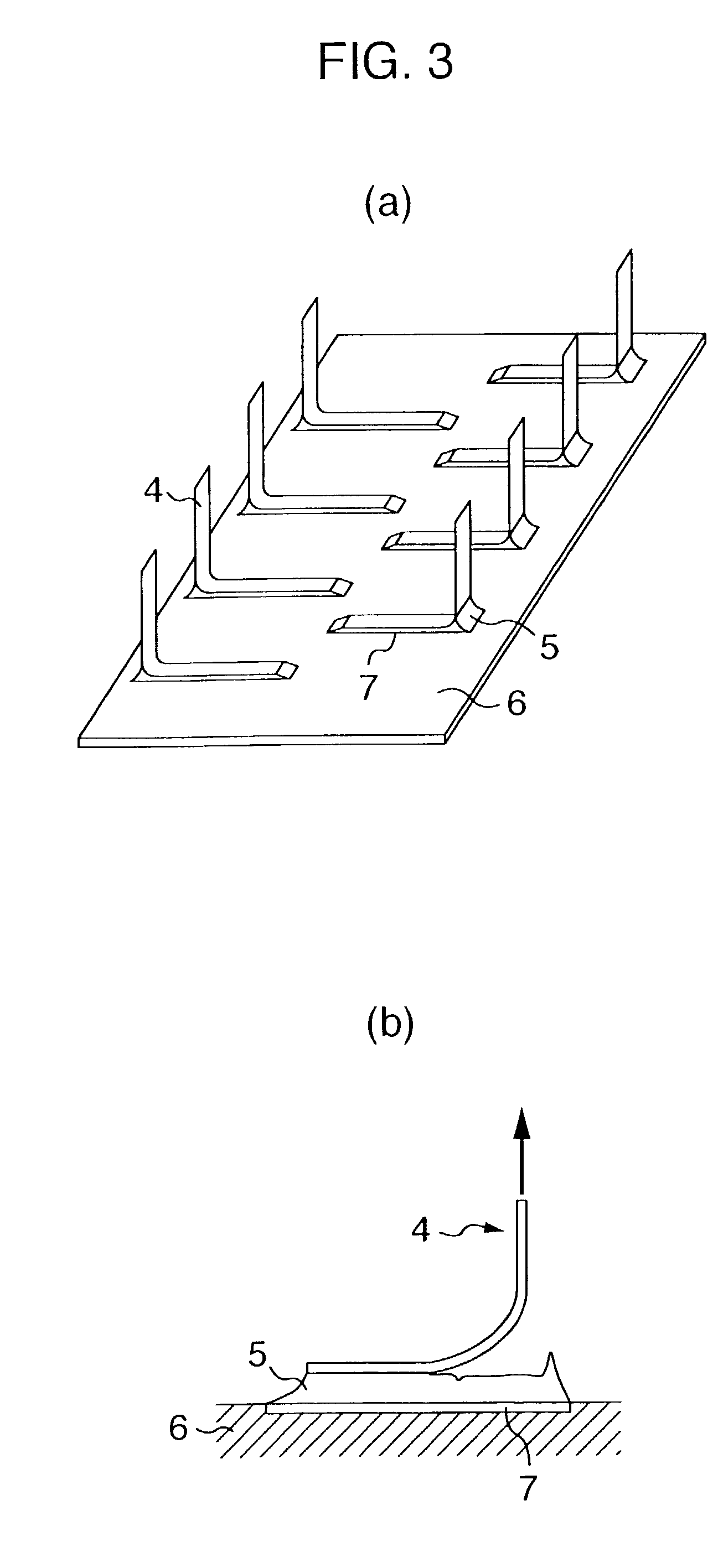Pb-free solder-connected structure and electronic device
a technology of electronic devices and solder connections, applied in the direction of final product manufacturing, sustainable manufacturing/processing, and semiconductor/solid-state device details, etc., can solve the problems of pollution of the global environment by electrical appliances, and the effect of living things, ensuring the resistance to whisker formation, and ensuring the bonding strength
- Summary
- Abstract
- Description
- Claims
- Application Information
AI Technical Summary
Benefits of technology
Problems solved by technology
Method used
Image
Examples
example 2
[0053] The cross-sectional structure of a TSOP lead is shown in FIG. 2 which is a part of the lead structure. A Cu layer 3 is formed on a lead 1 which is of an Fe--Ni alloy (42 alloy) and an Sn--Bi alloy layer 2 is formed on this Cu layer. The Sn--Bi alloy layer 3 and Sn--Bi layer 2 were formed by plating. The thickness of the Cu layer 3 was about 8 .mu.m and that of the Sn--Bi plating layer was about 10 .mu.m. The Bi content of Sn--Bi alloy plating layer was 5 wt %. Because of high rigidity of the TSOP lead, when it is used at a high temperature or under a condition that heat generation occurs in the device itself, stress generated at the interface is greater as compared with the QFP-LSI. In such cases, it is necessary to form an interface with sufficient bonding strength high enough to withstand this interface stress and the Cu layer under the Sn--Bi layer is effective for this purpose.
[0054] The TSOP was soldered to a printed-circuit board in a vapor reflow furnace with utilizati...
example 3
[0055] The electrode structures according to this invention can also be applied in an electrode on a board. For example, solder coating is effective in improving the solderability of boards. Conventionally, there have been used lead-containing solders such as a eutectic Sn--Pb alloy solder. Thus, the Sn--Bi alloy layer according to the invention can be used to make the solder for coating lead-free. Furthermore, because the electrode of a board is made of copper, sufficient bonding strength can be obtained when an Sn--Ag--Bi alloy solder is used. An example in which this structure is applied is shown; an Sn-8Bi alloy layer of about 5 .mu.m was formed by roller coating on a Cu pad (Cu electrode) on a glass epoxy substrate, which is a circuit board,
[0056] Wettability to boards and bonding strength were improved, because the solder layer was formed.
Industrial Applicability
[0057] An electrode structure can be realized, which is suitable for an Sn--Ag--Bi alloy solder excellent as a lead-...
PUM
| Property | Measurement | Unit |
|---|---|---|
| thickness | aaaaa | aaaaa |
| melting point | aaaaa | aaaaa |
| melting point | aaaaa | aaaaa |
Abstract
Description
Claims
Application Information
 Login to View More
Login to View More - R&D
- Intellectual Property
- Life Sciences
- Materials
- Tech Scout
- Unparalleled Data Quality
- Higher Quality Content
- 60% Fewer Hallucinations
Browse by: Latest US Patents, China's latest patents, Technical Efficacy Thesaurus, Application Domain, Technology Topic, Popular Technical Reports.
© 2025 PatSnap. All rights reserved.Legal|Privacy policy|Modern Slavery Act Transparency Statement|Sitemap|About US| Contact US: help@patsnap.com



